Hue, the historic capital of Vietnam, is a city that mesmerizes travelers with its rich cultural tapestry and profound historical significance. Once the political and cultural epicenter during the Nguyen Dynasty from 1802 to 1945, Hue boasts an array of stunning monuments, lush landscapes, and culinary delights that have drawn attention from around the globe. Recognized as a UNESCO World Heritage Site, Hue is not just a city of the past but a living museum where history whispers through the ancient walls, and every corner reflects the artistry and resilience of its people. The city's strategic location along the Perfume River adds to its charm, as the flowing waters have witnessed centuries of stories, triumphs, and tribulations. For history buffs, culinary enthusiasts, or anyone seeking a profound connection with Vietnam's illustrious past, the question isn't if Hue is worth visiting, but how soon can you embark on this unforgettable journey?
Hue's history is deeply intertwined with the narrative of Vietnam itself. As a city that transitioned from a princely capital to a modern cultural hub, Hue offers a unique glimpse into the historical evolution of the nation. The past is embedded in the architecture of the Imperial City, where each stone and design reflects the intricate practice of art and power during the Nguyen Dynasty. Hue is not merely a destination; it is a portal to a time when emperors reigned, and royal customs dictated the rhythm of daily life. Visitors are invited to traverse the same paths that once echoed with the footsteps of emperors, revealing a cultural dimension that is both immersive and evocative.
The historical significance of Hue is not just confined to the Imperial City. The surrounding temples and royal tombs are key pieces of the grand puzzle that is Vietnamese heritage. From the funeral practices shaped by Confucianism to the Buddhist influences seen in the architecture, these sites provide insights into the spiritual beliefs that governed the lives of the emperors and their subjects. Unraveling the layers of history in Hue is like peeling an onion; there is always another story waiting to be uncovered, and each layer reveals the rich emotions and philosophies that continue to shape Vietnamese identity today.
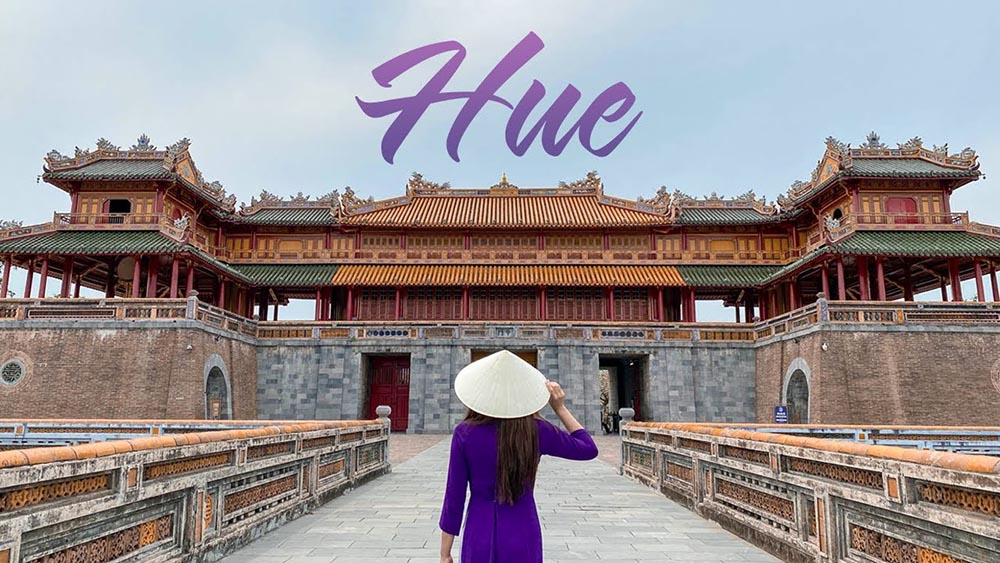
The Imperial City of Hue stands as a majestic symbol of Vietnam's rich past, a labyrinth of buildings and gardens resonating with stories from eras long gone. Commissioned by Emperor Gia Long, the complex's construction began in 1804 and was completed under subsequent Nguyen emperors. The design of the Imperial City is rooted in feng shui principles, artfully balancing the structure's orientation with the natural landscape, making it a sanctuary that embodies harmony and stability. As you walk through its gates, you can almost hear the whispers of history and imagine the opulence that once surrounded the Nguyen emperors.
Inside the walls of the Imperial City lies the Forbidden Purple City, an area reserved for the emperor and his family, signifying his divine authority. This inner sanctuary is surrounded by a series of defensive walls, reflecting the intricate fortifications that were once paramount to the safety of the royal family. The following table outlines key features of the Imperial City:
| Feature | Description |
|---|---|
| Size | Approximately 520 hectares |
| Number of Gates | 10, each symbolizing different cultural meanings |
| Architectural Styles | A mix of traditional Vietnamese and French styles |
| UNESCO Status | Recognized as a World Heritage Site in 1993 |
Visitors can roam through the remnants of temples, gardens, and administrative buildings, each structure revealing the artistic finesse and architectural prowess of the Vietnamese artisans of that era. Furthermore, the Imperial City is flanked by serene landscapes, with the Perfume River enhancing its beauty. As the sun sets, the view turns magical, casting an ethereal glow over the structure's moat and towers, reminiscent of its splendid past. Being in the Imperial City is not just a visual experience; it is an emotional journey into the very heart of Vietnam's imperial history, presenting an opportunity for self-reflection on one's own connection to history.
The Imperial City, therefore, is not just a collection of significant structures; it is a narrative woven through time, embodying the ambitions, desires, and dreams of those who once ruled. To visit Hue and not explore the Imperial City would be like reading a book and skipping the introduction; it provides essential context for understanding the unfolding of Vietnam's history.
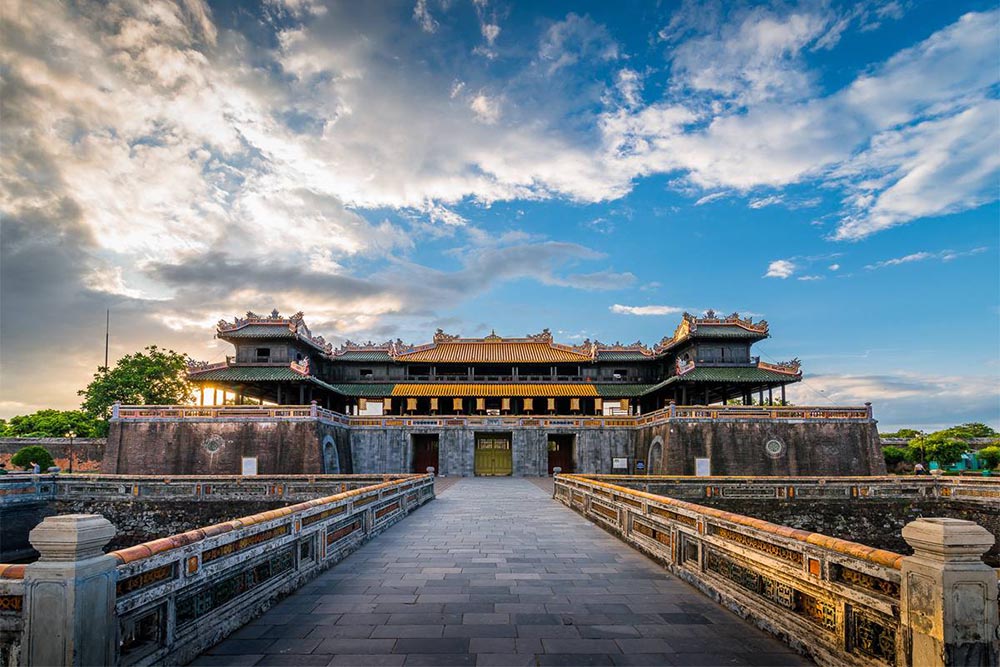
Hue is replete with historical sites, each holding significant cultural and spiritual value. Among these, the royal tombs of the Nguyen emperors offer a captivating glimpse into Vietnam’s imperial past. The tombs, such as those of emperors Minh Mang, Tu Duc, and Khai Dinh, are not mere burial sites; they are elaborate structures designed to honor the emperors in their afterlife while reflecting their philosophical beliefs. Each tomb showcases a unique architectural style that seamlessly marries Vietnamese and European influences, illustrating the empire's openness to various cultures during its height.
For instance, the Tomb of Tu Duc features vast gardens, lakes, and temples that echo the emperor's love for poetry and nature. This tranquil setting, adorned with intricately carved stone engravings, gives visitors a deeper understanding of the emperor's character and the aesthetic values of the time. Visitors can experience the following highlights at these royal tombs:
The Royal Tombs are often surrounded by beautifully landscaped gardens and serene lakes, adding to their charm and inviting visitors to reflect on the imperial history. They reflect the designers' intent to create a sacred space where the emperors could rest in peace while maintaining a connection to their subjects through meticulously designed landscapes.
Beyond just tombs, Hue is also home to numerous temples and pagodas, most notably the Thien Mu Pagoda, which stands tall on the banks of the Perfume River. This iconic symbol of Hue not only serves religious functions but also represents the city’s rich cultural tapestry. With each site, you are invited to ponder the spiritual legacies left behind and the cultural narratives that continue to resonate today.
As you wander through these historical sites, it becomes clear that Hue is a city where time ceases to exist, and the past merges seamlessly with the present. Each visit offers a personal journey that reveals the depths of Vietnam’s history, making Hue indispensable for anyone wishing to grasp the essence of Vietnam's imperial grandeur.
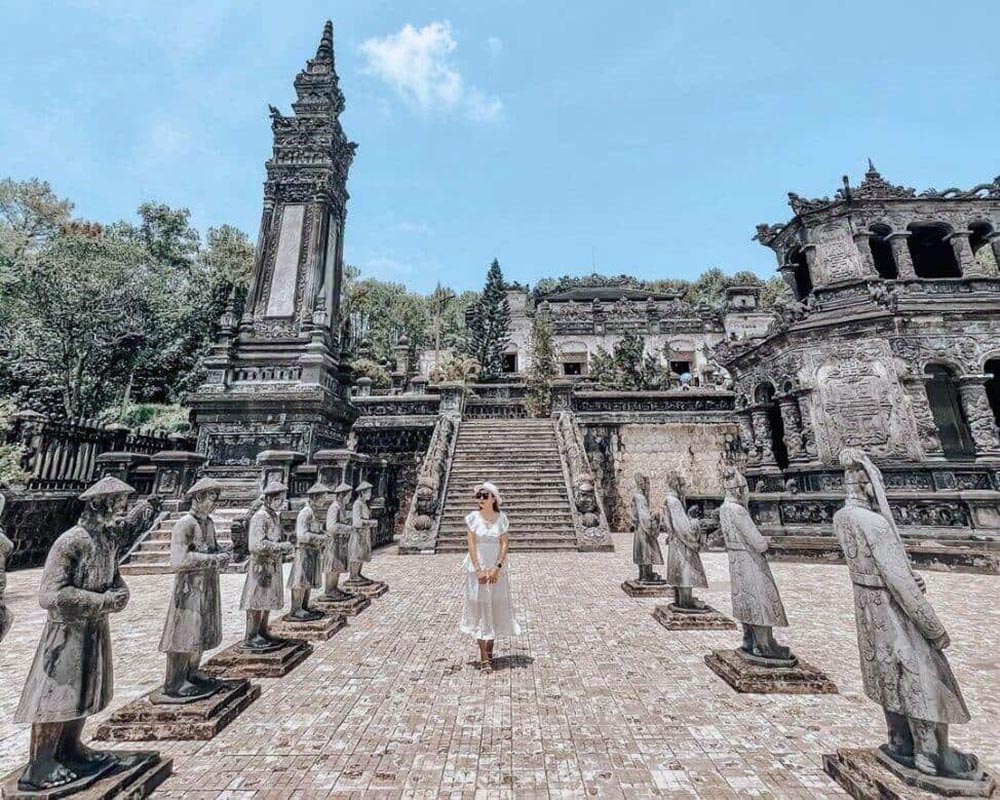
Being recognized as a UNESCO World Heritage Site is no small feat, and for Hue, this title signifies more than just a mark of excellence; it is an acknowledgment of the city’s universal cultural importance. Inscribed in 1993, the Complex of Hue Monuments is celebrated for its historical value and architectural brilliance, representing a unique blend of traditional Japanese influences and ancient Vietnamese customs. The UNESCO status serves as a powerful reminder of the need to preserve and protect such invaluable history for future generations.
The value of UNESCO designation extends beyond mere recognition; it brings with it a sense of responsibility. This international acknowledgment encourages both local and global investment in conservation efforts and promotes tourism that respects and honors the cultural heritage of Vietnam. The following table outlines the key components that contribute to its World Heritage status:
| Component | Description |
|---|---|
| Architectural Significance | Unique fusion of various architectural styles |
| Cultural Relevance | Represents the historical narrative of the Nguyen Dynasty |
| Environmental Integrity | The landscapes surrounding the monuments are preserved as a natural habitat |
| Community Involvement | Local participation in preservation and cultural promotion efforts |
Moreover, visiting a UNESCO World Heritage Site like Hue not only enhances one's knowledge about the historical context but also allows tourists to support the local economy through responsible tourism. Visiting Hue means participating in the preservation of Vietnamese cultural heritage, allowing it to endure through generations.
Hue's UNESCO recognition also opens doors for international collaborative efforts in the realm of cultural heritage conservation. Through events, educational programs, and cultural exchanges, Hue becomes a stage for sharing stories, connecting with cultures, and fostering a sense of global citizenship. This is particularly crucial in today’s rapidly changing world, where globalization risks overshadowing local traditions.
In conclusion, a visit to Hue is not merely for sightseeing; it is an opportunity to engage in the preservation of rich cultural narratives and participate in a global initiative to honor human expression through history.
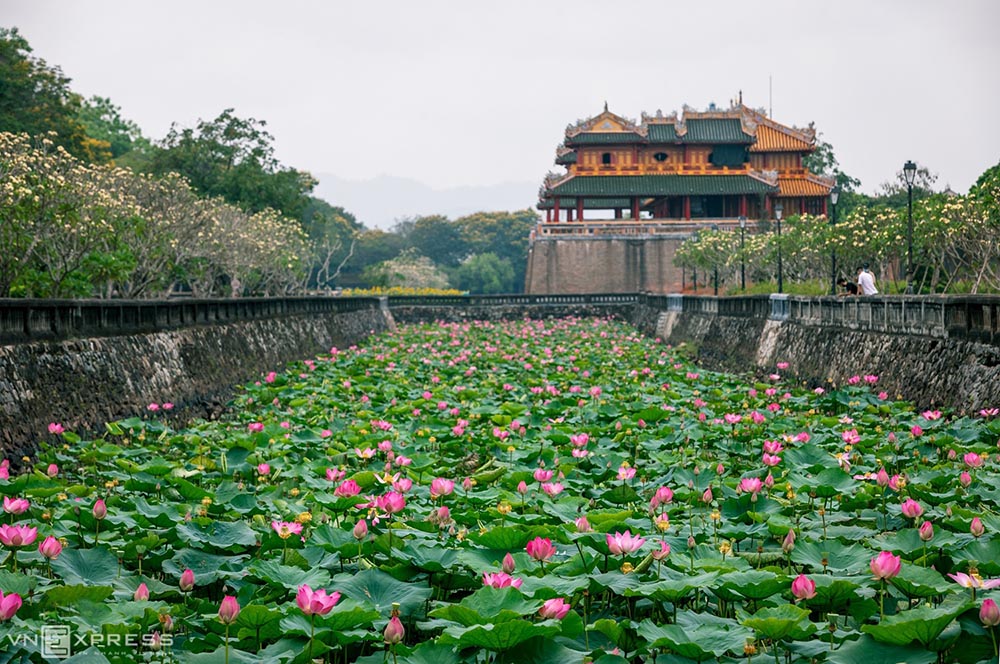
Hue's rich cultural heritage extends far beyond its historical significance. The city is alive with vibrant traditions, captivating performances, and culinary delights that make it an extraordinary destination. Exploring these cultural experiences allows visitors to not only witness, but also actively engage with the life that pulses through Hue. From traditional music recitals to the delights of street food stalls, there is an infectious energy that envelops you as you navigate through the city's maze of experiences.
Experiencing Hue's culture is akin to tasting a rich, multi-layered cake; each layer offers a different flavor and texture that contributes to the overall delightful experience. Delving into local music, art forms, and culinary practices unfolds a mosaic of influences both indigenous and foreign that have been carefully curated through time. With significant festivals and events that celebrate these traditions, cultural engagement becomes an integral part of any visit to Hue.
A perfect way to immerse yourself in Hue's cultural experience is through participation in workshops that teach traditional crafts. Here, visitors can learn how to create intricate conical hats or engage in traditional Vietnamese painting. These workshops not only provide hands-on experiences but also connect participants to the artisans whose skills have been passed down for generations. Additionally, witnessing performances of Nhã Nhạc, Vietnam's royal court music, transports you back in time, illustrating the depth of Hue's artistic heritage.
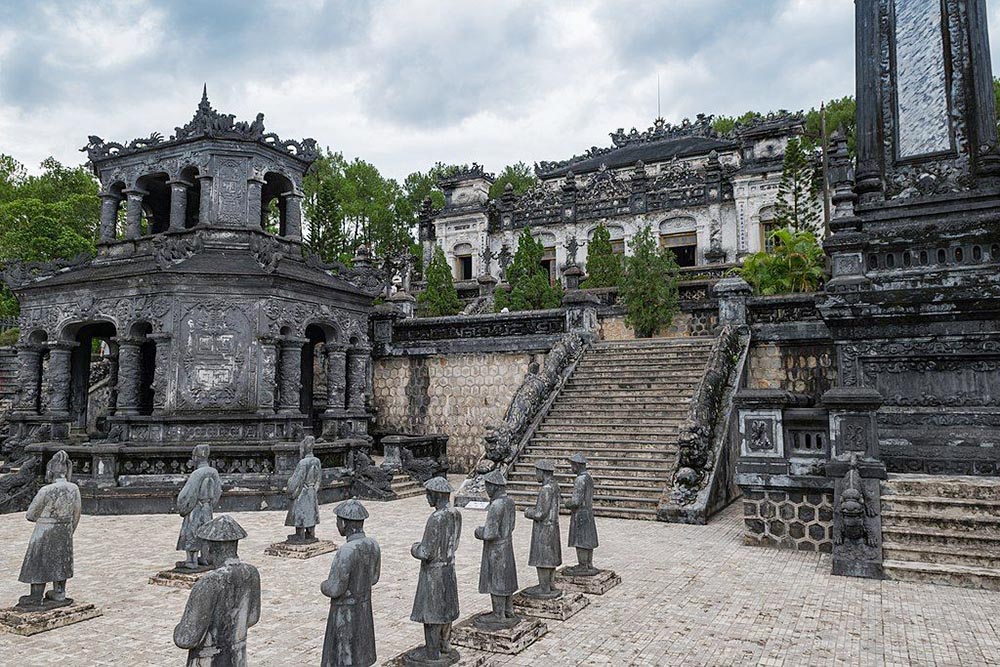
No exploration of Hue's cultural landscape is complete without indulging in its traditional cuisine, a culinary legacy with roots deeply embedded in its royal history. From the streets bustling with vendors to elegant restaurants showcasing royal dining, the culinary offerings in Hue are as diverse as they are exquisite.
Bun Bo Hue, a spicy beef noodle soup, is a must-try dish that encapsulates the heart of Hue's flavors. Made with rich broth flavored with lemongrass, this dish is often garnished with fresh herbs and served with a side of lime to elevate the taste. The symphony of flavors in Bun Bo Hue represents not just a meal, but a celebration of Hue's culinary heritage where every bowl tells a story of tradition and identity. Here is a quick overview of some must-try dishes:
| Dish | Description |
|---|---|
| Bun Bo Hue | Spicy beef noodle soup served with fresh herbs |
| Com Hen | Rice with clams and herbs, showcasing a classic local flavor |
| Banh Khoai | Crispy pancakes filled with shrimp and bean sprouts |
| Banh Beo | Delicate rice cakes topped with shrimp and fish sauce |
Beyond the iconic dishes, the experience of dining in Hue goes hand in hand with the city’s history. The royal cuisine, once reserved for the emperors, is now accessible to everyone. Restaurants that serve imperial meals provide a taste of the elaborate multi-course dining that was once a privilege for royalty. Each dish is presented meticulously, echoing the artistic standards that the Nguyen court upheld.
More than just feeding one's hunger, the culinary journey through Hue offers insights into the cultural practices, customs, and societal values that shaped the city. Each meal embodies a connection to the past, inviting visitors to participate in an unbroken lineage of culinary traditions. Dining in Hue is not just about the food; it is about experiencing the essence of history through taste.
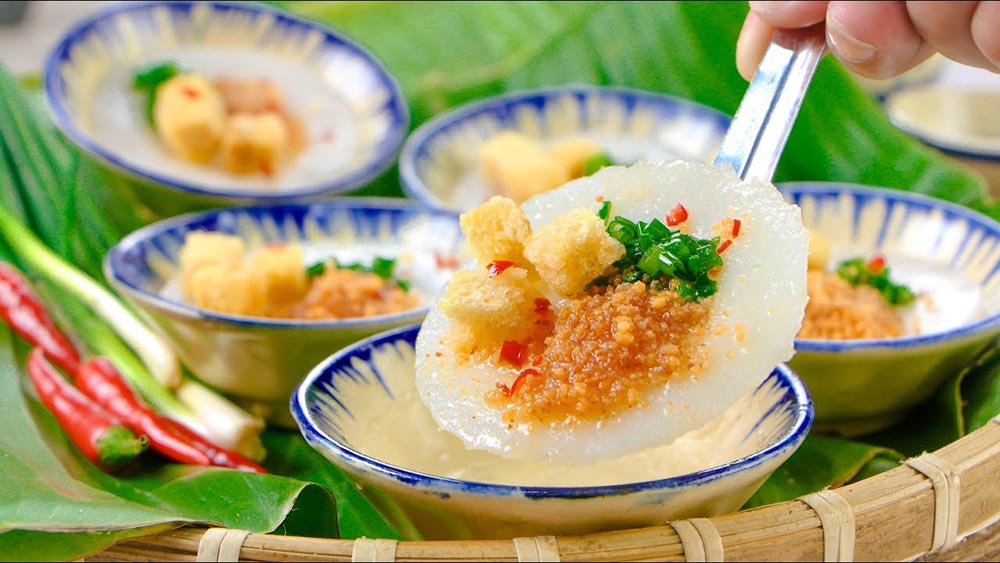
Hue's calendar is rich with festivals and events that demonstrate the city's vibrant cultural life. The Biennial Hue Festival stands at the forefront, celebrating traditional values, artistic expression, and community spirit. This festival transforms the city into a vibrant hub of artistic performance, showcasing everything from royal ceremonies and folk games to colorful parades and food fairs, all infused with a touch of the region's rich history.
Scheduled for 2024 from June 7 to June 12, the upcoming festival promises an array of activities that invite both locals and international visitors to immerse themselves in Hue's unique cultural tapestry. Some highlights include:
During the festival, the atmosphere is electric as the streets come alive with excitement, laughter, and a sense of unity. This event is not only a public manifestation of Hue's cultural pride but a platform for preserving and promoting traditional art forms, further solidifying the ties between generations of Vietnamese.
Beyond the grand festivals, local markets teem with daily life, offering visitors a taste of everyday rhythms and culinary delights. Markets like Dong Ba buzz with the lively chatter of vendors and customers, creating an authentic backdrop of Hue's vibrant community. Exploring these bustling markets immerses visitors in the local culture, where they can sample freshly prepared dishes, purchase handmade crafts, and connect with the city’s heritage in the most intimate way.
By partaking in these cultural festivals and local markets, you not only witness the beauty of Hue's traditions but become part of the living history that continues to evolve.
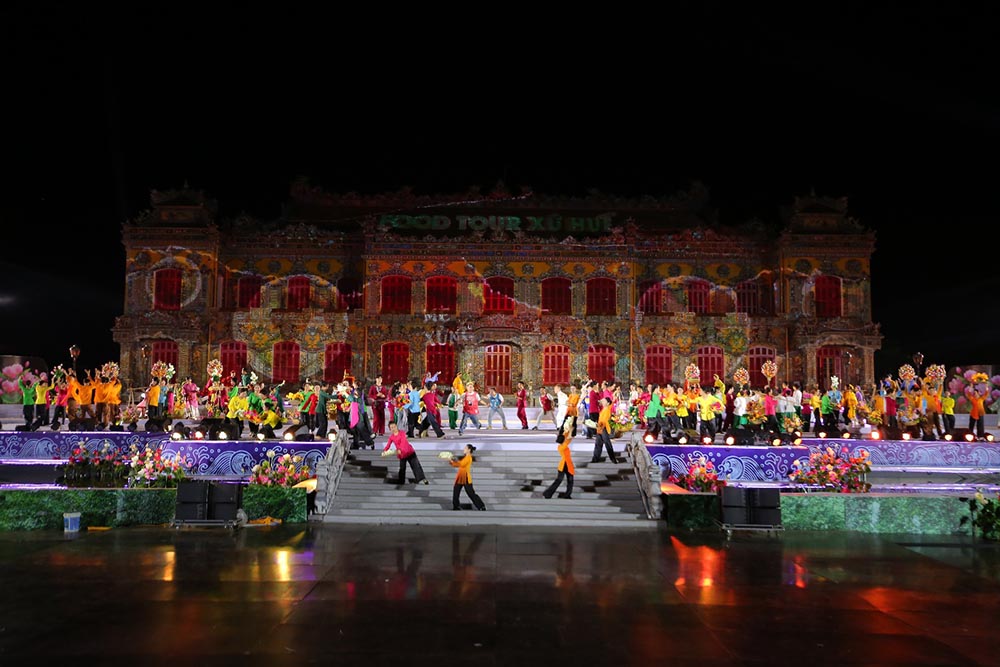
Local markets in Hue are a treasure trove of experiences that capture the essence of daily life. When you wander through the stalls of Dong Ba Market, the sounds of vendors calling out prices, the vibrant colors of local produce, and the enticing aromas of food carts fighting for your attention create an exhilarating sense of place. It’s more than just shopping; it's about connecting with the rhythms of life that define Hue.
Each market visit offers an adventure, complete with the opportunity to taste some local specialties right where they originated. Try the Banh Khoai, a crispy pancake filled with shrimp and bean sprouts, enjoyed best with a drizzle of a dipping sauce that perfectly complements its flavor. Here’s a breakdown of experiences you can expect at the local markets:
| Market Name | Signature Dishes | Cultural Highlights |
|---|---|---|
| Dong Ba Market | Bun Bo Hue, Banh Khoai, Com Hen | Traditional herbal medicines, textiles |
| An Dong Market | Specialty cakes, Rice paper | Local craftsmanship, handmade goods |
| Thien Mu Pagoda Market | Fresh fruits, traditional sweets | Cultural performances, incense offerings |
As you move from stall to stall, take the time to interact with the locals. They are often eager to share stories of their goods, whether it be the history of their family recipes or insights into local customs. Engaging with the vendors not only enriches your experience but also creates a bridge between cultures. You start to see the heart and soul of Hue, unveiling the true spirit of its people.
Additionally, local markets are the perfect setting for cultural exchanges and learning about everyday life in Hue. From artisans showcasing their crafts to food vendors excited to introduce you to traditional dishes, every interaction is a lesson in the city's revered heritage. A visit to these markets provides an invaluable and authentic glimpse into the daily lives of the residents, connecting tourists with the very heartbeat of Hue.
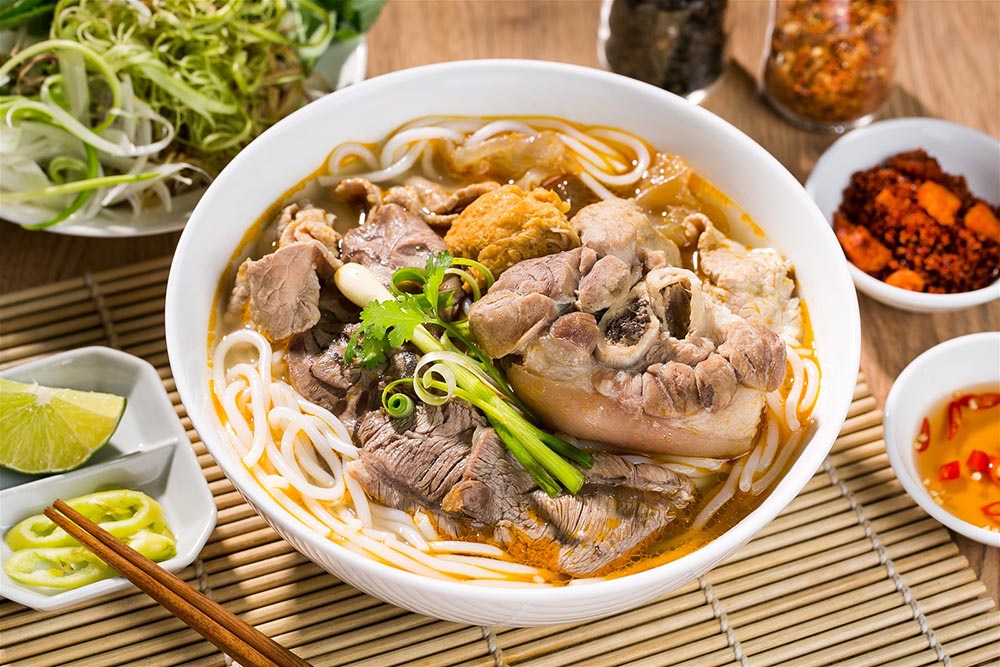
In addition to its rich history and vibrant culture, Hue is surrounded by a plethora of natural attractions that enhance its allure as a travel destination. The breathtaking landscapes, characterized by lush mountains, serene rivers, and pristine beaches, provide opportunities for relaxation and adventure alike. Nature enthusiasts will find themselves captivated by the beauty that envelops the city, making it a well-rounded travel experience.
As you explore the area surrounding Hue, the blend of natural beauty and cultural richness becomes apparent. It's an invitation to step outside the historical realm and discover the breathtaking landscapes that make Hue a scene of tranquility and wonder. Among its natural attractions is the iconic Perfume River, which weaves gracefully through the region, offering stunning views and a peaceful ambiance that beckons visitors to linger and take in the surroundings.
Bach Ma National Park is another gem, located just a short drive from the city. This park is a haven for nature lovers, offering an abundance of hiking trails, exotic flora and fauna, and stunning vistas that stretch as far as the eye can see. Here, you can encounter over 2,000 species of plants and countless wildlife species, making for an enriching experience.
The Perfume River is more than just a body of water; it is the lifeblood of Hue, deeply intertwined with the city's identity. Named after the fragrant flowers that float downstream during the rainy season, the river is a picturesque setting that enchants visitors with its serene beauty. Floating along its gentle currents, travelers are treated to striking views of the surrounding landscapes, with lush hills and historical sites adorning the banks.
As you stroll along the riverside, the atmosphere shifts with the changing light. Mornings bring hazy tranquility, while sunsets cast brilliant hues across the sky, reflecting off the water like liquid gold. The beauty of the Perfume River is best experienced during leisurely boat rides, allowing you to immerse yourself in the calm as you glide past traditional fishing villages and vibrant greenery.
| Feature | Description |
|---|---|
| Length | Approximately 80 kilometers |
| Cultural Significance | Integral to Hue's identity and daily life |
| Scenic Highlights | Thien Mu Pagoda, fishing boats, lush landscapes |
The riverbanks are dotted with Thien Mu Pagoda, one of Hue’s most iconic landmarks that stands as a sentinel overlooking the water. Built in the 17th century, the pagoda symbolizes the spiritual essence of the city and is a must-visit site for anyone exploring the area.
In each quiet ripple and serene panorama, the Perfume River tells a story of cultural heritage, providing both a visual feast and a profound sense of peace. For those seeking solace in nature, the river is a tranquil escape where one can reflect, breathe, and absorb the beauty of their surroundings.
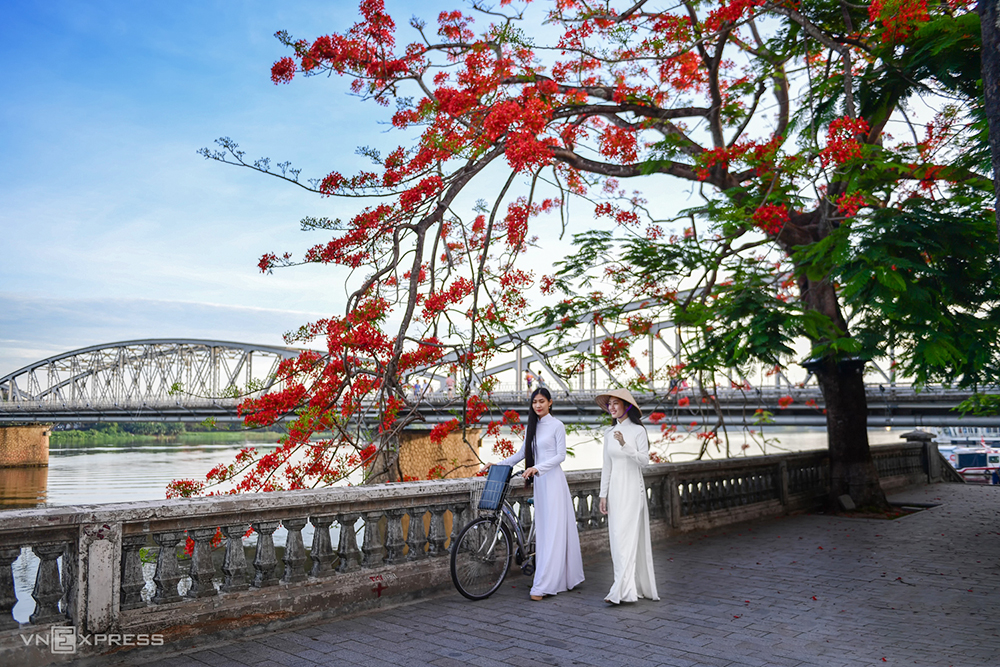
Just a stone's throw from Hue lies Bach Ma National Park, a true sanctuary for nature lovers and adventure seekers. This park is a stunning mosaic of ecosystems, showcasing a diverse range of flora and fauna, many of which are endemic to the region. Spanning over 37,000 hectares, Bach Ma National Park offers several hiking trails that lead to breathtaking viewpoints, allowing visitors to immerse themselves in the area's untouched beauty.
The park's hiking paths wind through lush rainforests, past cascading waterfalls and up to the summit of Bach Ma Mountain. From the peak, visitors can enjoy panoramic views that extend to the coastline and the neighboring areas of Hue, giving a sense of the natural connectivity that characterizes this region. Here’s a quick overview of what to expect in Bach Ma National Park:
| Feature | Description |
|---|---|
| Hiking Trails | Over 15 trails varying in difficulty |
| Flora and Fauna | Home to diverse species, including rare orchids |
| Scenic Spots | Summits and waterfalls offering spectacular views |
Moreover, the park is rich in biodiversity and is a UNESCO Biosphere Reserve, making it a vital area for ecological research and conservation. Birdwatchers and wildlife enthusiasts can revel in the vibrant life that flourishes here, adding another layer of discovery to your exploration.
While Hue serves as a cultural epicenter, its proximity to such stunning national parks allows visitors to balance their historical exploration with adventures in the great outdoors, truly enhancing the appeal of this unique destination.
For those seeking relaxation and leisure, the beaches near Hue offer the perfect escape from the city’s historical fervor. Lang Co Beach is renowned for its stunningly white sands and crystal-clear waters, providing an idyllic spot for sunbathing, swimming, or simply unwinding in the gentle breeze. Spanning over 10 kilometers, this beach is often described as one of Vietnam’s most beautiful.
| Beach Name | Description |
|---|---|
| Lang Co Beach | Famous for its pristine beauty and water sports |
| Canh Duong Beach | A more secluded beach perfect for tranquility |
| Seasonal Activities | Water sports, local seafood specialties |
Nearby, Canh Duong Beach offers a much quieter experience, with its well-preserved natural beauty and few crowds. This beach makes an excellent choice for travelers looking to escape the bustling tourist areas. With soft sands and clear waters, it invites you to soak up the sun, enjoy a good book, or simply listen to the soothing waves lapping against the shore.
Beyond relaxation, these beaches are great spots for water sports and activities, from snorkeling to kayaking, thus offering something for every type of traveler. Local beachside restaurants entice with fresh seafood, allowing you to indulge in the region's culinary delights while enjoying a stunning sunset.
With their proximity to Hue, these beaches provide a balance of cultural exploration and leisure, creating a well-rounded travel experience. Visitors can take their time to dive into Vietnam's rich history, and when the sun sets, retreat to the beaches to rejuvenate in nature’s embrace.
As you consider your travel plans in Vietnam, you may wonder how Hue compares to other cities such as Ho Chi Minh City and Hanoi. Each city possesses its distinct character, drawing travelers for various reasons. Hue offers a glimpse into imperial history and rich cultural experiences, while the bustling metropolises of Ho Chi Minh City and Hanoi present a modern urban lifestyle marked by excitement and rapid development.
In contrast to both of these cities, Hue is a haven for those who seek a deep dive into Vietnam's history and culture. Here, life moves at a slightly slower pace, allowing you to immerse yourself fully in its historical sites and cultural traditions. While Ho Chi Minh City buzzes with the energy of modern life and attracts visitors eager for nightlife and shopping, Hue offers a unique, tranquil escape into the country's royal past.
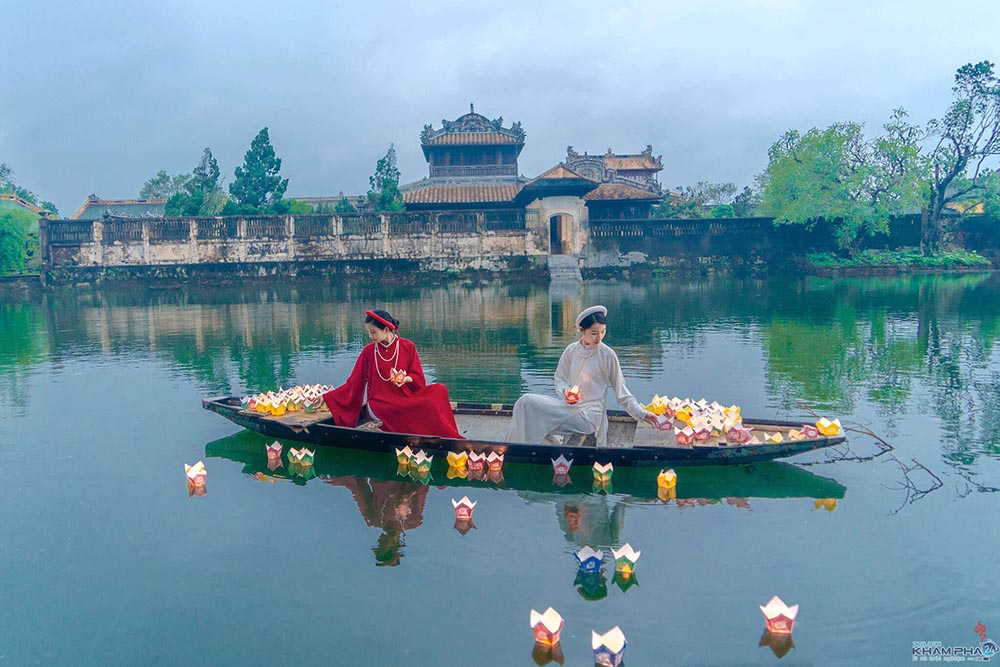
When comparing *Hue and Ho Chi Minh City, the differences become apparent almost immediately. Ho Chi Minh City, Vietnam's economic powerhouse, pulsates with a vibrant energy that is contagious. Modern skyscrapers tower over historical landmarks, and the city’s rapid pace embodies contemporary Vietnamese life. Tourists flock to buzzing markets, chic cafes, and expansive shopping malls, captivated by the fusion of history and modernity.
In contrast, Hue serves as a reminder of Vietnam’s imperial history, where time seems to stand still. The Imperial City, along with its temples and tombs, invites visitors to reflect on the opulence of the Nguyen Dynasty. While both cities boast rich cultures and histories, they cater to different experiences. Here you may find:
| Feature | Hue | Ho Chi Minh City |
|---|---|---|
| Atmosphere | Quieter, reflective | Fast-paced, energetic |
| Cultural Focus | Imperial heritage, traditional crafts | Contemporary lifestyle, nightlife |
| Culinary Adventures | Traditional royal cuisine | Diverse modern dining options |
The culinary experiences in both cities showcase unique aspects of Vietnamese cuisine. In Hue, you will find dishes typically served in royal banquets, while Ho Chi Minh City presents a more cosmopolitan blend of flavors through its vibrant street food scene and international restaurants.
The comparison between Hue and Hanoi reveals two cities that together paint a complex picture of Vietnam's history and culture. Both cities carry their historical weight, yet they do so in vastly different manners. Hue remains a testament to imperial grandeur, while Hanoi showcases a blend of ancient history and contemporary vibrancy.
Hanoi, as the current capital, reflects Vietnam's ongoing evolution, presenting a dynamic atmosphere characterized by bustling markets and modern architecture alongside historical landmarks like the Ho Chi Minh Mausoleum and Temple of Literature. Visitors can experience both the echoes of history and the fervor of modern life, where traditions interweave seamlessly with the upbeat rhythm of a youthful city.
When it comes to cultural experiences, Hue remains unique with its focus on royal customs, traditional music, and culinary practices that trace their roots back to imperial times. The festival scene in Hue emphasizes cultural heritage preservation, while Hanoi’s events often embrace a modern flair. Here’s a quick overview comparing both cities:
| Aspect | Hue | Hanoi |
|---|---|---|
| Key Historical Sites | Imperial City, Royal Tombs | Ho Chi Minh Mausoleum, Old Quarter |
| Cultural Events | Festivals focused on tradition | Diverse events, modern performances |
| Atmosphere | Peaceful, historical | Lively, urban |
Traveling through both cities offers a comprehensive journey through Vietnam's past and present, allowing visitors to appreciate the depths of its heritage while absorbing the fast-evolving urban landscape.
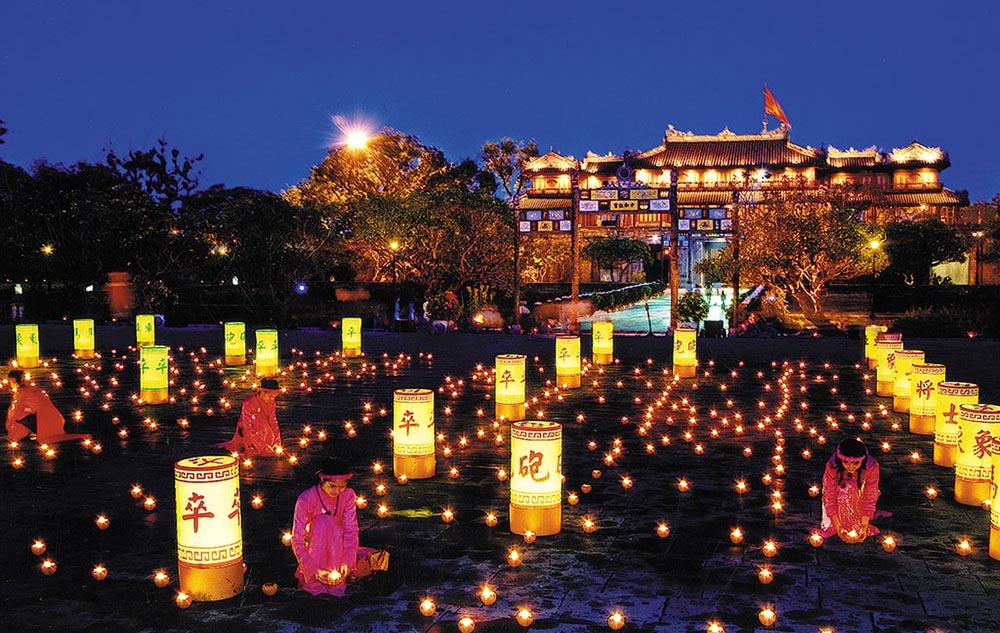
1. What is the best time to visit Hue? The best time to visit Hue is during the dry season, from March to August, when the weather is pleasant and ideal for exploring outdoor sites and heritage attractions.
2. How can I travel around Hue? Hue offers various transportation options including bicycles, motorbikes, taxis, and walking tours, allowing you to explore the city at your own pace.
3. What are some must-try dishes in Hue? Visitors should try Bun Bo Hue (spicy beef noodle soup), Com Hen (clam rice), Banh Khoai (crispy pancakes), and Banh Beo (rice cakes with shrimp).
4. Are there any beaches near Hue? Yes, Lang Co Beach and Canh Duong Beach are nearby coastal destinations, offering beautiful sandy shores and opportunities for relaxation and water sports.
5. How does Hue differ from Ho Chi Minh City and Hanoi? Hue offers a peaceful, historically immersive experience focusing on imperial heritage, while Ho Chi Minh City is modern and lively, and Hanoi combines ancient history with a vibrant urban atmosphere.
In summation, Hue stands out as a remarkable destination that profoundly resonates with history, culture, and natural beauty. Its status as a UNESCO World Heritage Site cements its significance, while its rich tapestry of royal heritage, traditional cuisine, and vibrant festivals enhance the experience for every traveler. With its blend of historical significance and scenic surroundings, Hue offers a refuge for those seeking to connect with Vietnam’s past in a meaningful way.
For history enthusiasts, culinary explorers, and nature lovers alike, Hue is a city that promises a rewarding journey into the heart of Vietnamese culture. Each step within its ancient walls and along the banks of the Perfume River propels visitors deeper into stories waiting to be uncovered. To visit Hue is not just to witness history it's to experience the essence of a nation, where past and present coexist harmoniously, making it undoubtedly worth visiting.